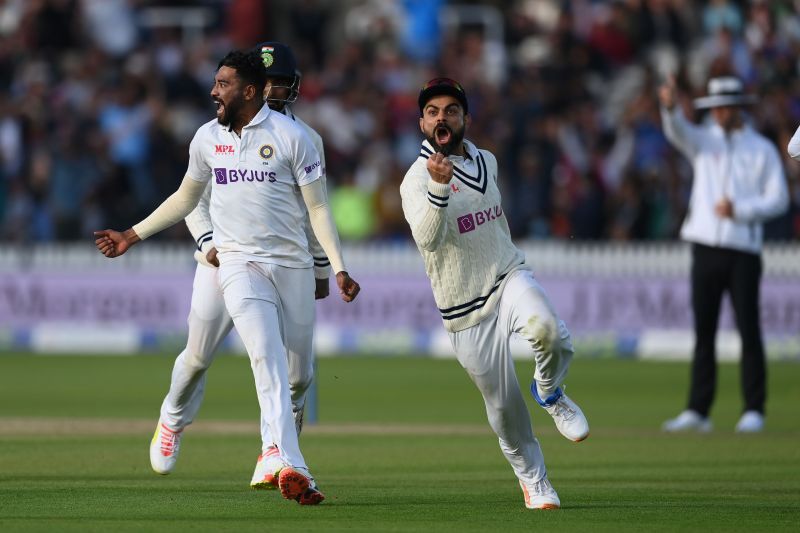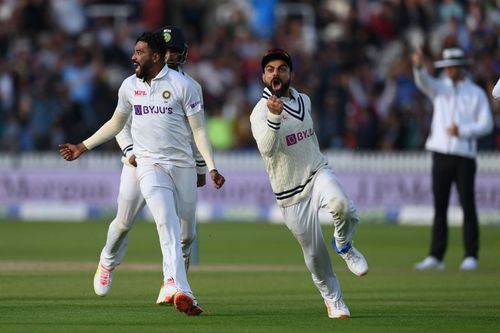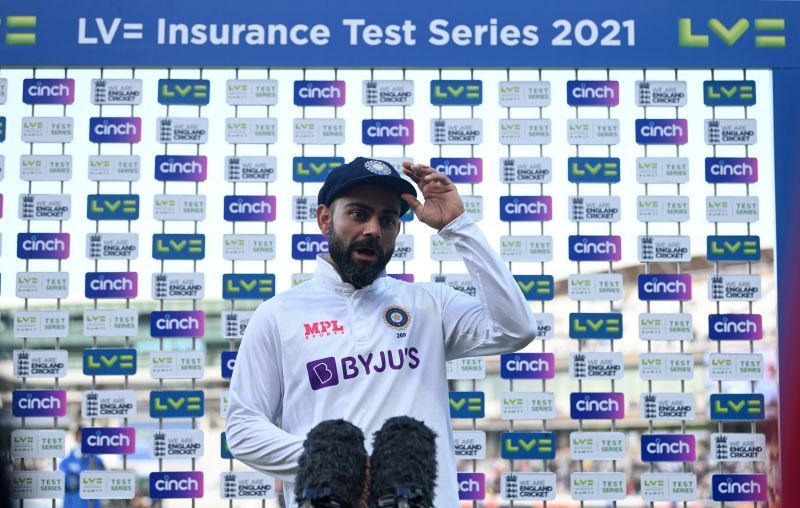
Joe Root vs Virat Kohli: Where the Lord's Test was won and lost

Joe Root scored 213 runs in the Lord's Test; Virat Kohli scored 62. Joe Root has scored 386 runs in four innings in this series so far; Kohli has scored only 62 in three innings. Joe Root has amassed 1277 runs in 2021 at an average of 67; Virat Kohli has 291 at an average of 26.
By every metric available, there is no denying that Joe Root has simply been the better batsman this match, series and even the year. But in the most important metric for the team as a whole, the series score reads 1-0 in favour of India. That is not any coincidence, as the two players have fared differently as captains of their respective teams.
Kohli, the player, may have had far inferior numbers to that of his English counterpart, but he has far outshone Root with his captaincy, with the Lord's Test providing a shining example of that.
Rewind to the end of Day 4. England took a slender 27-run first-innings lead and had India reeling at 181-6. KL Rahul, Rohit Sharma, Cheteshwar Pujara, Virat Kohli, Ajinkya Rahane and Ravindra Jadeja were all back in the dressing room, and it was just Rishabh Pant and the tail.
Joe Root had the option of taking the new ball for or stick with the old ball and use his spinner Moeen Ali, who had taken two wickets, and it was more than evident that Ishant Sharma was struggling against him.

But Root, being the English captain he is and therefore more trusting of his fast bowlers, decided to take the new ball - which essentially pushed the umpires to call for stumps due to bad light.
He must have thought it was only a matter of time before the Indian tail would burn out. So he might as well give his bowlers a break and finish things off early the next morning. A day later, it would be an understatement to say that England were overconfident of dismissing India.
But what Root failed to take into account was that by the time his team would return fresh on the fifth morning, India could get their house in order too. Thus asking Pant and Ishant Sharma to walk off at the end of Day 4 without having to negotiate about seven overs left in the day's play turned out to be a costly mistake.
But as costly as it was, it could have been mitigated in retrospect if England had run through the Indian lower order within the first ten overs on Day 5. And they were on course for just that, taking out Pant and Ishant Sharma early on Day 5. But then began the Mohamed Shami- Jasprit Bumrah show, aided in no small part by Root and his inexplicable decisions.
Joe Root's questionable tactics against Bumrah and Shami
The first was the decision to bombard Bumrah and Shami with short balls, possibly in retaliation to Bumrah doing it to Anderson at the end of England's first innings.
For starters, I do not think Root was in the wrong to prolong the innings and try to bat with Anderson at the other end, and I do not think he did it in the pursuit of a double century for himself either. It was the right thing to do, considering that if Anderson had survived the last two overs, Root would have started afresh on Day 4, and England could have done what India did to them. You never know.
But instead of leaving the issue as it was - fast bowlers being fast bowlers and Bumrah not to trying to go the expected route with yorkers but the other way with short balls - the English decided to make things personal. They did to Bumrah and Shami what the Aussies did to Hanuma Vihari and Ravichandran Ashwin in Sydney, and it is safe to say the Indians reacted exactly as the other pair did.
Ashwin went on Youtube to say how counterproductive that tactic was for Australia, because getting hit only made him and Vihari even more stubborn in their batting. That is what a charged-up Bumrah and Shami did to England at Lord's. Never before was Bumrah seen so animated and Shami so focussed when batting.
Even at this point, England hadn't fully lost the plot. That's where Root's field placements came into play. If one was watching the SonyLIV English commentary, one would have realised how every single commentator was confused by the uber-defensive approach by Root, and none of them were as baffled as Ajit Agarkar.
Root shunned the attacking multiple-slips approach, and resorted to something akin to someone playing minesweeper for the first time. Ajit Agarkar, as a fast bowler and as someone who has scored a century at Lord's, could not believe his eyes. He bemoaned the lack of catching positions for the pacers, the lack of a deep third man where an edge was most likely to go and pretty much every decision Root made regarding his fielders.
And Agarkar was obviously right. When the tail is batting, no matter how frustrating it is to bowl, no captain should go on the defensive. India had an all-out attacking field in England's second innings, which kept the pressure right on the hosts.

This is where Kohli's gung-ho approach came in handy. And I say this is despite being one of the biggest fans of MS Dhoni and the calmness he brought to the side that Kohli's attitude is infectious.
You can see how Virat Kohli has changed the way the Indian team plays in foreign conditions, how they rally around themselves and how they don't simply back down from a fight. Is it less gentlemanly? Yes. But was it entertaining to watch? You'll bet it was.
I'd take Mohammed Siraj staring down Ollie Robinson and hitting him in the chest any day. I'd take the entire Indian team mobbing around Robinson as soon as he walked out to bat any day. I'd take KL Rahul saying, 'you mess with one of us, you'll get all 11 coming at you' any day.
As long as Kohli's feistiness rubs on to the team and makes them bigger than the sum of their parts, it doesn't matter in the slightest if Joe Root is the objectively better batsman. Because what Virat Kohli lacks in runs, he seems to make up for that in every other way.
There are ten more players who can score the runs..for now.